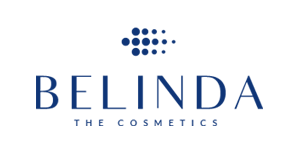Lifts Directive 2014/33/EU
The Lifts Directive 2014/33/EU is a crucial regulation that governs the safety and compliance standards for lifts and safety components in the European Union. This directive ensures that lifts installed within the EU meet stringent safety requirements, offering enhanced protection for users and operators alike. For businesses seeking CE Product Certificates (CE Marking), compliance with this directive is essential for market access and legal operation.
What Is the Lifts Directive 2014/33/EU?
The Lifts Directive 2014/33/EU sets out safety and performance requirements for lifts and their safety components, facilitating the free movement of these products within the EU market. It applies to:
Lifts permanently serving buildings and constructions.
Safety components for lifts, such as door locking devices, overspeed governors, and energy accumulators.
By adhering to this directive, manufacturers and installers can ensure their products are safe, reliable, and compliant with EU standards.
Key Goals of the Directive
Guarantee high safety standards for users and operators.
Ensure consistent compliance across all EU member states.
Simplify the certification process for manufacturers and service providers.
Facilitate trade by harmonizing technical requirements.

Why Compliance with the Lifts Directive Matters
Achieving compliance with the Lifts Directive 2014/33/EU is not only a legal requirement but also a strategic advantage. Businesses that obtain CE Marking demonstrate their commitment to quality and safety, boosting customer trust and marketability.
Benefits of Compliance
Market Access: Gain entry to the EU market and avoid legal barriers.
Enhanced Safety: Ensure the safety of lift users, reducing liability risks.
Reputation Boost: Build trust with stakeholders and customers.
Regulatory Assurance: Meet mandatory EU requirements and avoid penalties.
Learn More About Lifts Directive 2014/33/EU Requirements ...
Key Requirements Under the Lifts Directive
To comply with the Lifts Directive 2014/33/EU, manufacturers, installers, and safety component suppliers must meet specific criteria:
1. Safety and Performance Standards
Lifts must operate safely under all intended conditions.
Safety components must function reliably in case of emergencies.
2. Risk Assessments and Testing
Conduct a thorough risk analysis.
Perform extensive testing to ensure the lift meets safety standards.
3. Technical Documentation
Provide a comprehensive technical file, including:
Design and manufacturing details.
Risk assessments.
Test results.
4. CE Marking and Declaration of Conformity
Affix the CE Marking to compliant products.
Issue a Declaration of Conformity to confirm compliance.

Steps to Achieve Certification
Navigating the certification process for the Lifts Directive 2014/33/EU involves several key stages:
Step 1: Initial Assessment
Identify the specific requirements relevant to your lift or safety components.
Engage a Notified Body to assist with conformity assessment.
Step 2: Risk Analysis and Design Review
Perform a detailed risk assessment to identify potential safety issues.
Review the design to ensure compliance with directive requirements.
Step 3: Testing and Verification
Conduct rigorous testing to validate safety and performance.
Ensure that safety components meet operational reliability standards.
Step 4: Documentation Preparation
Compile a technical file including:
Product specifications.
Risk assessments.
Testing and verification records.
Step 5: Apply for CE Certification
Submit the technical file and application to a Notified Body.
Receive the CE Certificate upon successful assessment.
Learn More About Lifts Directive 2014/33/EU Technical Documentation ...
Industries Impacted by the Lifts Directive
Compliance with the Lifts Directive 2014/33/EU is essential for a range of industries, including:
Construction: Installation of lifts in residential, commercial, and industrial buildings.
Manufacturing: Production of safety components for lifts.
Maintenance Services: Ensuring installed lifts remain compliant through regular inspections.
Hospitality and Retail: Providing safe and reliable lift systems for customers and employees.
How CE Marking Enhances Global Opportunities
Obtaining CE Marking under the Lifts Directive 2014/33/EU opens doors to international trade and business growth. Companies can:
Expand operations across EU member states without technical barriers.
Build a competitive edge by showcasing compliance with high safety standards.
Enhance customer confidence in product reliability and performance.
Learn More About Lifts Directive 2014/33/EU Standards ...

Conclusion: Take the Next Step Toward Certification
Compliance with the Lifts Directive 2014/33/EU is essential for businesses aiming to succeed in the competitive EU market. By achieving CE Marking, companies demonstrate their commitment to quality, safety, and regulatory excellence.
Ready to start your certification journey? Contact us today to learn how our expertise can guide you through the process of achieving compliance and unlocking new market opportunities.
- Get Your Legal Advice
- All Experts Lawyers
- All Experts Lawyers
- Great Discounted Rates
- Fighting for The Average Joe
- Get The Money You Deserve
- All Experts Lawyers
- Justice For All


Point of View
Our Vision
A lawyer or attorney is a person who practices law, as an advocate, attorney, attorney at law, barrister, barrister-at-law, bar-at-law, civil law notary, counsel, counselor, counselor, counselor at law, solicitor, chartered legal executive, or public servant preparing, interpreting and applying law, but not as a paralegal or charter executive secretary. Working as a lawyer involves the practical application of abstract legal theories and knowledge to solve specific individualized problems, or to advance the interests of those who hire lawyers to perform legal services.

